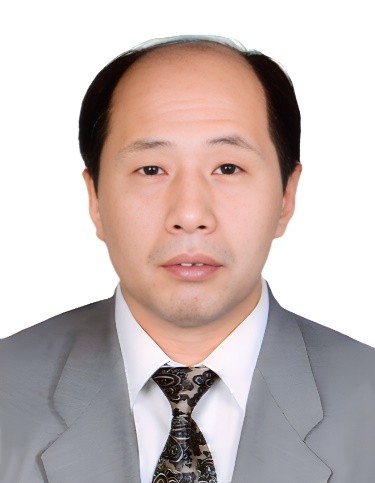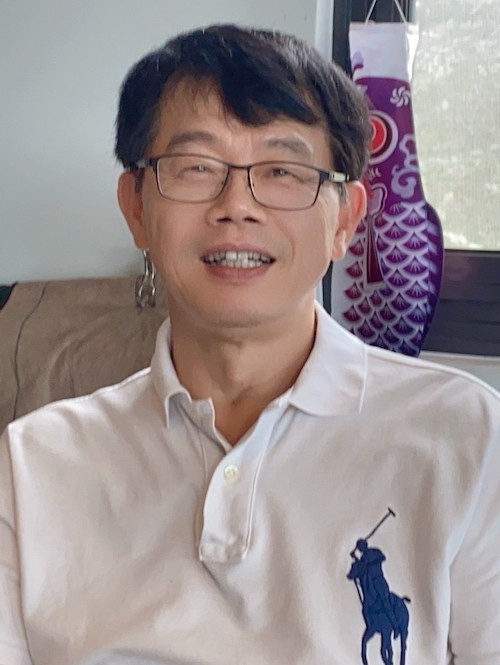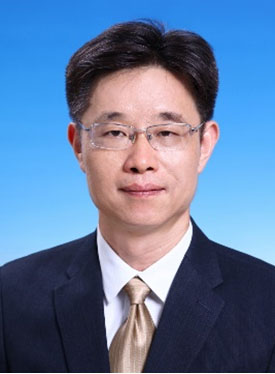Prof. Zuxin Xu
Member of Chinese Academy of Engineering, Tongji UniversitySpeech Title: Risk Analysis and Control of Urban Drainage Water Quality During the Rainy Season
Biography: Prof. Zuxin Xu has been dedicated to the comprehensive management of urban river pollution for an extended period, conducting research that reveals the causes and major issues of urban river pollution in China. By leveraging the interdisciplinary advantages of environmental science, hydraulics, and municipal engineering, she has innovated a systematic, coordinated, and coupled governance technology system. She developed a coupled pollution control technology for urban drainage and river networks, established a collaborative regulation method for ecological flow and environmental capacity, and pioneered key technologies for storm overflow management in urban drainage systems and ecological treatment of rural sewage. Her work played a significant role in the remediation of the Suzhou Creek in Shanghai. She has served as the Deputy Chief Engineer of the National Major Science and Technology Project for Water Pollution Control and Management and as a consulting expert for the United Nations Zimbabwe Water Project, making outstanding contributions to the management of urban river pollution in China. Prof. Zuxin Xu has been awarded two National Science and Technology Progress Second Prizes, three First Prizes, and four Second Prizes at the provincial and ministerial levels. She has published four academic monographs, was invited to co-author a special technical report for the United Nations Human Settlements Programme, and has been granted 23 invention patents. Additionally, she has published over 100 papers as the first or corresponding author. In 2019, she was elected as a member of the Chinese Academy of Engineering.
Prof. Tinglin Huang
School of Environmental and Municipal Engineering, Xi'an University of Architecture and TechnologySpeech Title: Water-Lifting and Aeration Induced Water Quality Improvement Technology and Application in Source Water Reservoirs
Biography: Dr. Tinglin Huang is a Distinguished Professor at the School of Environmental and Municipal Engineering, Xi’an University of Architecture and Technology, and former Vice President of the university. His research focuses on source water pollution and eutrophication control, water treatment technologies, water environment remediation, and optimization of water engineering systems. A National Model Teacher and recipient of the State Council’s Special Government Allowance, he was named to the National “New Century Hundred, Thousand, and Ten Thousand Talents Project” in 2007. He served as a member of the Seventh and Eighth Academic Degree Evaluation Committees of the State Council and as Deputy Director of the Ministry of Education’s Teaching Steering Sub-Committee for Water Supply and Drainage Science and Engineering. Prof. Huang leads the National Key Discipline of Environmental Engineering and directs the Shaanxi Provincial Collaborative Innovation Center for Water Pollution Control and Water Quality Security. He chairs the Water Supply and Drainage Committee of the Shaanxi Provincial Civil Engineering Society and holds leadership roles in professional bodies including the Chinese Society for Environmental Sciences and the International Water Association (IWA). He has led over 30 national-level projects—including key programs under the National Key R&D Program and NSFC grants—published more than 600 papers, edited six textbooks, and authored seven monographs. With an h-index of 59 and over 13,500 Google Scholar citations, his work has significantly advanced the field of environmental and municipal engineering.
Prof. Mohamed Gamal El-Din
Ph.D., P.Eng., FCSCE, FASCEProfessor, Canada Research Chair (Tier 1) in Sustainable and Resilient Wastewater Treatment for Reuse
NSERC Senior Industrial Research Chair in Oil Sands Tailings Water Treatment
Senior University of Alberta Engineering Research (UAER) Chair in Wastewater Management Towards Circular Economy
Director of Water Research Centre, University of Alberta
Theme Co-Lead, Resilient Reclaimed Land and Water Systems, Future Energy Systems
Research Chair in Environmental Engineering, Tongji University
Speech Title: Application of Surface Microlenses in Solar-Driven Photolysis and Photocatalytic Degradation of Micropollutants
Abstract: The removal of emerging micropollutants via solar-driven photodegradation processes represents an environmentally sustainable approach for water and wastewater treatment. However, its efficiency is often limited by the low intensity and low photon energy of solar irradiation in aquatic environments. To overcome these limitations, Microlenses (MLs) technology is been proposed as a promising strategy to improve photocatalyst performance by optimizing solar light distribution and increasing light intensity within photochemical reactors. In this study, surface MLs were fabricated on photoreactors of various geometries using a solvent exchange process (SEP)-assisted method to enhance photodegradation efficiency. Two types of MLs systems were investigated: polymer MLs and photocatalytic-functionalized MLs systems. Polymer MLs, including random MLs, ML arrays, and flexible concave MLs, demonstrated enhanced performance in various water matrices, attributed to their light-focusing and redistribution capabilities. Moreover, immobilized photocatalytic-functionalized MLs, Ag/ZnO nanorods, were successfully fabricated on the photoreactor, exhibiting robust photocatalytic activity, good stability, and operational reusability. These features position them as promising candidates for wastewater treatment, by effectively addressing the practical limitations associated with suspended photocatalysts. These MLs-based materials demonstrated efficient photodegradation of organic micropollutants (dyes, pharmaceuticals, and pesticides) and industrial contaminants, including naphthenic acids derived from the oil and gas industry, using a sustainable solar-driven approach with a low-energy, low-carbon, and high-efficiency strategy for water treatment.
Biography: Dr. Mohamed Gamal El-Din is a Professor in the Department of Civil and Environmental Engineering at the University of Alberta. His research focuses on innovative treatment approaches for municipal and industrial wastewater, including oil and gas. Since 2011, he has held an NSERC Senior Industrial Research Chair in Oil Sands Tailings Water Treatment and is also a Theme Lead for the Future Energy Systems (FES) theme on Resilient Reclaimed Land and Water Systems. In 2017, Dr. Gamal El-Din was awarded the Alberta Science and Technology Leadership (ASTech) Foundation Award for Innovation in Oil Sands Research. He is a Jinshan Distinguished Professor at Jiangsu University and was awarded the Research Chair in Environmental Engineering at Tongji University in China in 2020. In 2023, he was appointed the Canada Research Chair (Tier 1) in Sustainable and Resilient Wastewater Treatment for Reuse. That same year, he was also named the University of Alberta Engineering Research Chair in Community-Based Wastewater Management, with a focus on advancing the circular economy. Since May 2023, Dr. Gamal El-Din has served as Director of the Water Research Centre (WRC), and he currently holds the Senior University of Alberta Engineering Research (UAER) Chair in Wastewater Management. In 2024, Dr. Gamal El-Din was awarded the Albert E. Berry Medal by the Canadian Society for Civil Engineering (CSCE) for outstanding contributions to the field of environmental engineering in Canada and the Killam Award for Excellence in Mentoring. Dr. Gamal El-Din's commitment to education and research is unparalleled. Over the course of two decades, he has supervised a diverse group of 210 graduate students, research assistants, postdoctoral fellows, and research associates. Under his mentorship, these individuals have grown into accomplished professionals who are making significant contributions to their respective fields. Dr. Gamal El-Din is also a prolific researcher, with an extensive body of work that includes 360 peer-reviewed journal papers and 450 conference and workshop presentations, among other publications. His contributions to the field have been widely recognized, as evidenced by his impressive h-index of 75, and over 20,000 citations as per Google Scholar.
Prof. Hyunook Kim
Department of Environmental Engineering, University of SeoulSpeech Title: Microplastics Are Detected in Every Water Resource: Analytical Challenge in Their Detection and Management
Abstract: Microplastics (MPs), defined as plastic particles smaller than 5 mm, have now been detected in virtually every aquatic environment; they are detected from surface water and groundwater to drinking water, raw and treated wastewater, and storm water. Their ubiquity poses urgent challenges for both accurate quantification and effective management. Despite increasing global concern, methodological inconsistencies remain a major barrier to reliable monitoring and risk assessment. Current analytical approaches for MP detection/quantification which generally involve sample pretreatment consisting of density separation, filtration, and analytical quantification based on either spectroscopy (e.g., (-Fourier-transform infrared spectroscopy ((-FTIR), (-Raman spectroscopy), or gas-chromatography coupled to mass spectrometry (GC/MS), vary widely in recovery efficiency, size detection limits, and polymer identification accuracy. These variations hinder comparability across studies reported by different researchers. Establishing standardized analytical methods and data-driven management strategies is essential to protect water resources from the emerging threat of MP pollution. In this presentation, we discuss advances in MP detection, including automated imaging based on (-FTIR and (-Raman, and pyrolysis-GC/MS alongside ISO/TC 147 and TC 61 initiatives toward harmonized measurement methods. A few managemental strategies for MPs in water resources have been being reported: for examples, source control, improved wastewater treatment, sludge management, and public-policy interventions to reduce primary and secondary MP emissions. Due to the complexity and costs associated with MP quantification, only limited amounts of data are produced. Namely, we need an analytical method which is more routine-analysis friendly; for better evaluation of a managemental approach, a simple, uncostly, and rapid analytical method is required. This presentation introduces a total-organic-carbon based method to rapidly and effectively analyze MPs in water resources.
Biography: Dr. Hyunook Kim is Professor at Environmental Engineering, University of Seoul, Korea, and Director of R&D Center of Core Technologies for Water Treatment. Professor Kim earned his B.S. degree in Environmental Science from Yonsei University, Korea in 1994, and an M.S. degree in Environmental Engineering from Johns Hopkins University in 1997, and a Ph.D. from University of Maryland at College Park in 2000. Before he joined the faculty member at University of Seoul in 2002, he worked as Environmental Engineer for US Dept. of Agriculture, MD, USA. Professor Kim’s research in the area of water pollution control includes a number of projects on process control and operation of water and wastewater treatment plants. Especially he is interested in monitoring and control of contaminants of emerging concern. He has published numerous journal papers and made conference presentations. He has been received a few awards for his academic and research achievements.
Prof. Cheng-Di Dong
Chair Professor, Department of Marine Environmental Engineering, National Kaohsiung University of Science and TechnologyInternational Honorary Member of American Academy of Environmental Engineering and Science
Speech Title: Urban Port Sediments as Indicators of Aquatic Pollution and Ecological Risk
Abstract: Over 80% of global cargo is transported by sea, making port development vital to international trade and economic growth. However, semi-enclosed harbor environments are vulnerable to contamination from port activities and land-based inputs. Pollutants such as metals, polycyclic aromatic hydrocarbons (PAHs), phthalate esters (PAEs), and alkylphenols (APs) tend to accumulate in sediments, posing ecological risks. This study analyzed the distribution, composition, sources, and ecological risks of metals, PAHs, PAEs, and APs in sediments from seven major commercial ports in Taiwan. Results indicated that different assessment models yielded varying pollution and risk levels. Source apportionment (MLR–APCS) revealed that Cr was influenced by both anthropogenic and geological factors, Mn, Ni, and Co were mainly geogenic, while Cu, Hg, Zn, Cd, and Pb were primarily anthropogenic. PAE concentrations ranged from 129 to 1894 ng/g dw (DEHP 55.1%), APs from <0.2 to 913 ng/g (4-NP 93.2%), with DnBP, DnOP, and 4-NP being key contributors to ecological risk. Total PAH concentrations (8.4–572.5 ng/g) originated mainly from coal combustion (31.5%), vehicular and fossil fuel emissions (23.5%), and biomass burning (45.0%). Based on TEQ-derived indices, outer-port sediments showed low to moderate risk, while inner-port sediments exhibited moderate to high risk. Urban port sediments provide an effective medium for assessing aquatic pollution, reflecting both anthropogenic impacts and potential ecological risks. As sediments serve as both habitats and contaminant sinks, accurate sediment quality evaluation is essential for informed management and sustainable environmental development.
Biography: Prof. Cheng-Di Dong is a Chair Professor in the Department of Marine Environmental Engineering, National Kaohsiung University of Science and Technology (NKUST), Taiwan. Dr. Dong obtained his Ph.D. in Environmental Engineering from the University of Delaware, USA in 1993 and M.S. in Environmental Science from New Jersey Institute of Technology, USA in 1990. Dr. Dong is Dean of the College of Hydrosphere of NKUST. Dr. Dong’s research focuses on waste-to-resources, biotechnology, nanotechnology, novel catalytic materials and biochar for environmental applications. Dr. Dong has published more than 500 research and review articles in leading international journals, 7 book chapters, and edited 6 special issues of scientific journals. His h-index ~66 and more than 17000 citation according to Google Scholar Citation. He has won several scientific awards and grants from renowned academic bodies. Dr. Dong was in the “World’s Top 2% Scientist-Stanford University Releases List (2020, 2021, 2022, 2023)” for Environmental Sciences. He is a Fellow of International Bioprocessing Association. Dr. Dong currently serves as Editor of Sustainable Environment Research, and he is Editorial Board Member of Bioresource Technology. He has also served as Guest Editor of Special Issues in Bioresource Technology, Environmental Pollution, Bioresource Technology Report, Catalysts, and Applied Sciences.
Prof. Zhimin Qiang
School of Environmental Science and Engineering, Shanghai Jiao Tong UniversitySpeech Title: Unraveling the Radical Chemistry of Nitrophenols and Biomass-Burning Brown Carbon in Waters
Abstract: More frequent global wildfire events intensify the exposure risks of nitrophenols through brown carbon (BrC) emissions. Radical reactions dominate the fates of nitrophenols in surface, municipal, and atmospheric waters, yet the involved reaction kinetics and mechanisms remain poorly understood. In this work, by combining transient and steady-state multispectral analyses, the second-order rate constants (k) for nitrophenols and biomass-burning BrC reacting with HO• as well as common secondary radicals (e.g., Cl2•−, CO3•− and NO3•) were determined (k ~ 105−1010 M−1 s−1 at pH 2.0~10.0 for both protonated and deprotonated nitrophenols), most of which are reported for the first time. We also experimentally demonstrated that the reactions of nitrophenols and BrC with various radicals could produce a substantial amount of HONO/NO2− (a key precursor of tropospheric HO•), with molar yields reaching ~50%. Mechanistic investigations revealed that phenoxy radical (PhO•), generated either from either single electron transfer or addition-elimination reactions during the radical reactions of nitrophenols, acted as a universal intermediate for the de-nitration. Hence, the new kinetic and mechanistic insights suggest that radical-induced de-nitration process of BrC and nitrophenols in acidic waters may serve as a previously overlooked HONO source, but such de-nitration does not guarantee detoxification due to the simultaneous generation of high-risk biphenols. This work highlights the critical role of secondary radicals in nitrophenols and BrC transformation across different waters, shedding light on several unforeseen chemical impacts driven by intensified global wildfires.
Biography: Dr. Zhimin Qiang is a distinguished professor at the School of Environmental Science & Engineering, Shanghai Jiao Tong University. He was a recipient of the National Science Fund for Distinguished Young Scholars, and had served as the director of Drinking Water Science and Technology of Chinese Academy of Sciences, and the director of Sate Key Laboratory of Environmental Aquatic Chemistry of China. His research covers advanced treatment, green disinfection, and safe distribution of water and wastewater. Prof. Qiang has led over 40 research projects, published about 250 SCI papers (H index = 62) and 120 Chinese papers, and been recognized as a Highly Cited Researcher by Elsevier in China. He holds 20 innovation patents and has received 8 national/provincial honors and awards.






